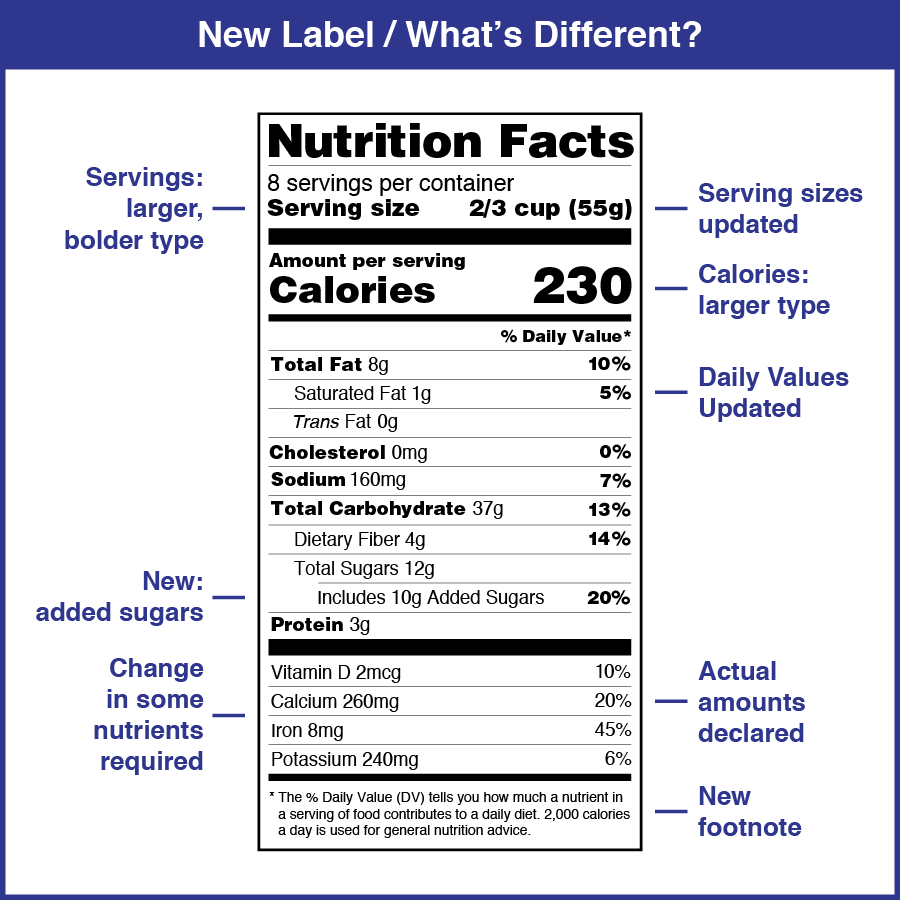Knowing how to read a nutrition label is important for making informed good choices and understanding which options align with your dietary goals.
The history of food labels
Nutrition labels date back to the early 20th century, when public awareness of food safety and nutrition began to rise.
- 1906: In the U.S., the Pure Food and Drug Act aimed to eliminate misleading labels and ensure the safety of food and drugs. As nutrition science advanced, more emphasis was placed on the nutritional content of food.
- 1938: Food, Drug and Cosmetics Act: Established comprehensive regulations to ensure the safety and efficacy of food, drugs and cosmetics in the United States, marking a significant advancement in consumer protection.
- 1960s and 1970s: Governments began to standardize labeling practices where there was a push for nutritional information on packaging, reflecting growing consumer interest in health.
- 1990: The Nutritional Labeling and Education Act mandated that most packaged foods include a standardized Nutrition Facts panel.
- 2004: The Food Allergen Labeling and Consumer Protection Act required clear labeling of major allergens, reflecting growing awareness of food allergies.
- 2016: The U.S. Food & Drug Administration (FDA) introduced updated nutrition label guidelines including larger font for calorie counts, revised serving sizes and added sugars listed separately.
Understanding a food nutrition label
By breaking down the key components of the label, you can better assess the nutritional value of the foods you consume and select products that support your health, manage dietary restrictions and help you live a more balanced lifestyle.
A nutrition label typically includes the following parts:
- Serving size: Shows the recommended portion for a single serving and the total number of servings per container.
- Calories: Indicates the total energy provided per serving.
- Nutrients: Lists key nutrients, including:
- Total Fat: Includes saturated and trans fats.
- Cholesterol: Indicates the amount of cholesterol per serving.
- Sodium: Displays the salt content.
- Total Carbohydrates: Includes dietary fiber and total sugars (with added sugars specified).
- Protein: Shows the protein content per serving.
- Vitamins and minerals: Highlights important nutrients like Vitamin D, calcium, iron and potassium.
- Percent Daily Value (%DV): Indicates how much a nutrient contributes to a daily diet based on a 2,000-calorie daily intake.
- Ingredients list: Provides a detailed list of all ingredients in the product, listed in order of quantity.
While the information on a food label is based on a diet of 2,000 calories per day, you may need more or less than that amount depending on your personal health, lifestyle and activity level. If you eat more than one serving, remember to multiply the number of calories and nutrients to get a more accurate number.
What does the updated FDA label look like?
The FDA nutrition facts panel is more comprehensive than the U.S. Department of Agriculture (USDA) nutrition facts panel. The FDA panel aligns with current scientific understanding of nutrition. It also includes information on added sugars, vitamin D and potassium which are important for making informed food choices.
The FDA updated food labels in 2016 to revise servings sizes and make it easier for consumers to understand calories and added sugars. Since 2020, all food manufacturers are required to update nutrition labels to match these new requirements.
The FDA nutrition facts panel features a bold and clear design.

Why is added sugars included in the FDA format?
The FDA found scientific evidence that eating too many added sugars can make it hard to meet nutrient needs while staying within calorie limits.
Why are vitamin D and potassium included in the FDA format?
Vitamin D and potassium are nutrients that we often don’t get enough of in our diets. Vitamin D is important for bone health and potassium helps lower blood pressure. Not having enough of these can increase the risk of chronic disease.
Why are vitamins A and C not included in new format?
American diets lacked vitamins A and C in the early 1990s. Now it is rare that the general population is not getting enough of these vitamins.
Mom's Meals® can help
We are committed to providing quality products and clear information. Mom’s Meals has moved from using the USDA nutrition facts panel to the FDA nutrition facts panel on all our USDA meals. Plus, each delicious meal is created in USDA- and FDA-inspected facilities — providing the highest level of compliance with federal regulations governing food production.
We take the guesswork out of eating better. Browse our nine condition-specific menus of convenient, ready-to-heat-and-eat nutritious meals. There are some tasty decisions to make!



